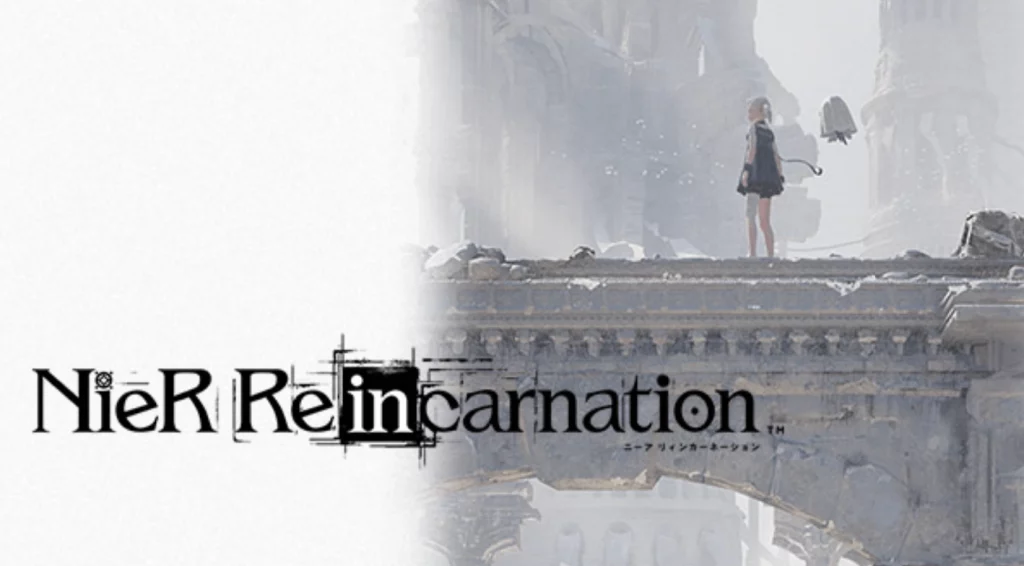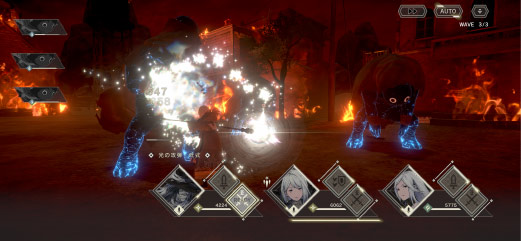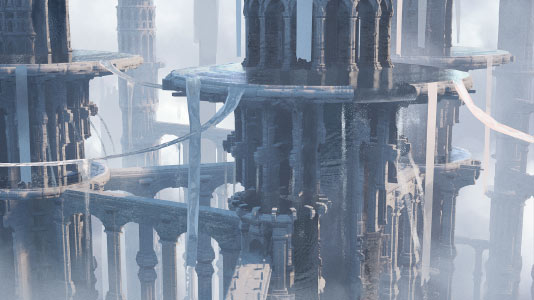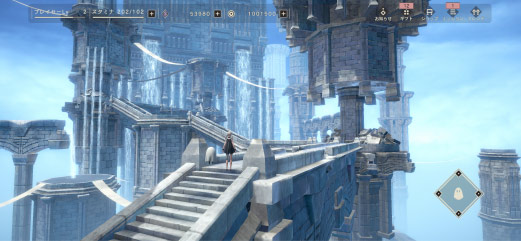I’ve been trying to write up an exegesis on NieR: Reincarnation, a mobile f2p gacha that’s part 2D walking simulator, part 3D walking simulator, and part turn-based RPG. The analysis may have grown beyond my grasp, but I will post some thoughts rather than continue agonizing about it.
After several weird games with compelling stories (Drakengard series, NieR: Gestalt/Replicant), Yoko Taro struck platinum (terrible pun there) with NieR: Automata. I feel like he had finally said what he wanted to say and got his message out to people, and from here on he’s trying new things and having fun. SINoAlice debuted a year and a half ago, and NieR: Replicant got remastered for modern consoles. NieR: Reincarnation followed this year, and Voice of Cards: The Isle Dragon Roars will be available on PC and console 28 October.

For the first few stages, the player controls a sad girl who walks around in a giant floating tower-structure called The Cage. While there, she attempts to restore stories. So The Cage is the frame story. I think. Each story-within-the-Cage is associated with a weapon, a call-out to most of Yoko’s older work: when the player upgrades a weapon in a NieR or Drakengard game, they get a macabre story about the weapon’s wielder. In NieR: Reincarnation, that mechanic is core gameplay, and the story isn’t just text.

The weapon stories are explored with a 2D walking simulator instead. In each story, the player controls the weapon’s wielder and learns flashes of their history by walking through stylized diorama scenes and interacting with objects that have exclamation points over them. The stage always ends with an ATB RPG battle: the conceit being that the black birds are making the story go awry, and you have to fix it. I still don’t know how the weapons ended up in The Cage, or whether they are relevant to the world of the frame story. Tutorial text suggests that they are dreams from other realities.

Only parts of this game are VN-like, but I stopped to analyze it because the game does some things with story that I like. Most of the chapters are vignettes about important moments in the character’s life. The short stories contrast with the expansive environments. Often, the story we are told is the climax of a much bigger story. The settings of each story are spare, and there’s enough left unsaid that they could conceivably be all set in the same world at different times. Genres change from late nineteenth-century tech level to space robots.

Additional content allows the player/reader to unlock other vignettes of the characters presented in the weapon stories. These flesh out the characters some more with backstory or continued story, shedding light on the events of their weapon stories.
I have finished the main arc of the story, and I’ll be satisfied whether the game makes a new arc or not. I bought the soundtrack, but didn’t spend any money on this game otherwise. I think I would have paid $20 for it. I found this game inspiring because I am very interested in stories that are told out of order, and I think that conceit works very well in a digital format where the reader can easily cross-reference clues and events. It makes me think about the story and ask questions of it continuously.